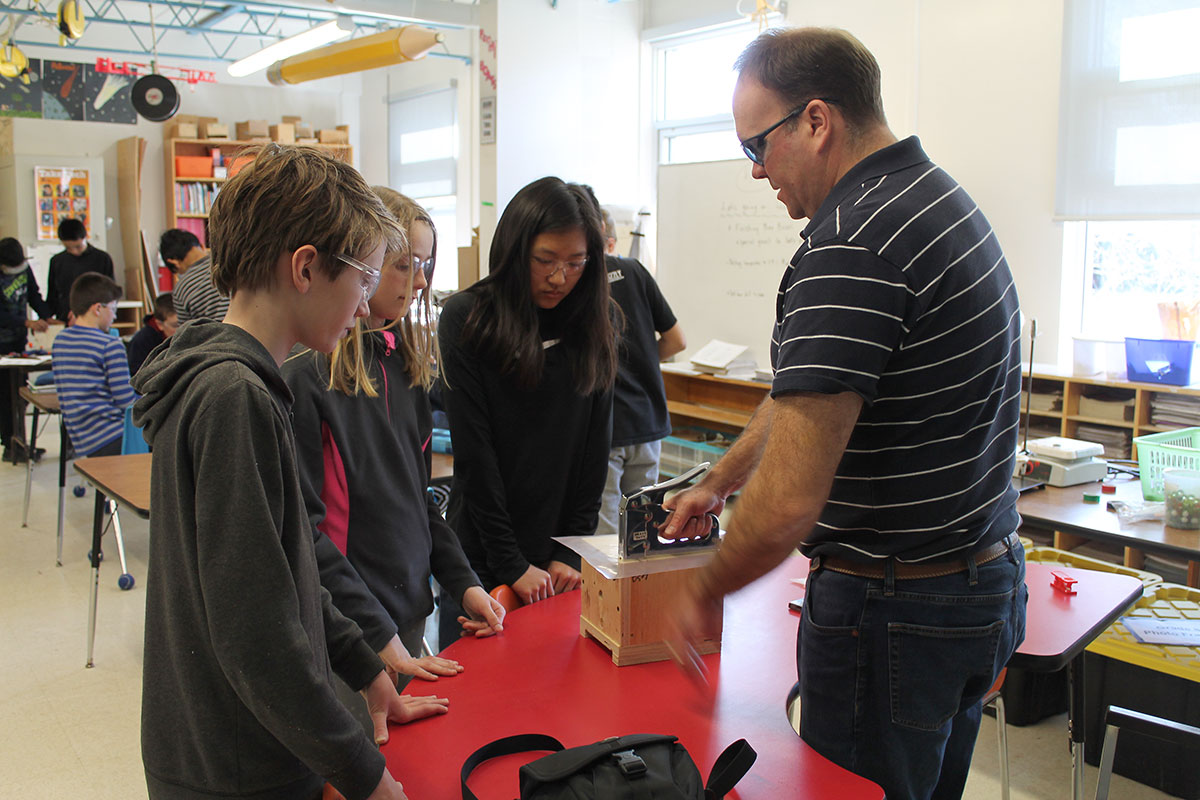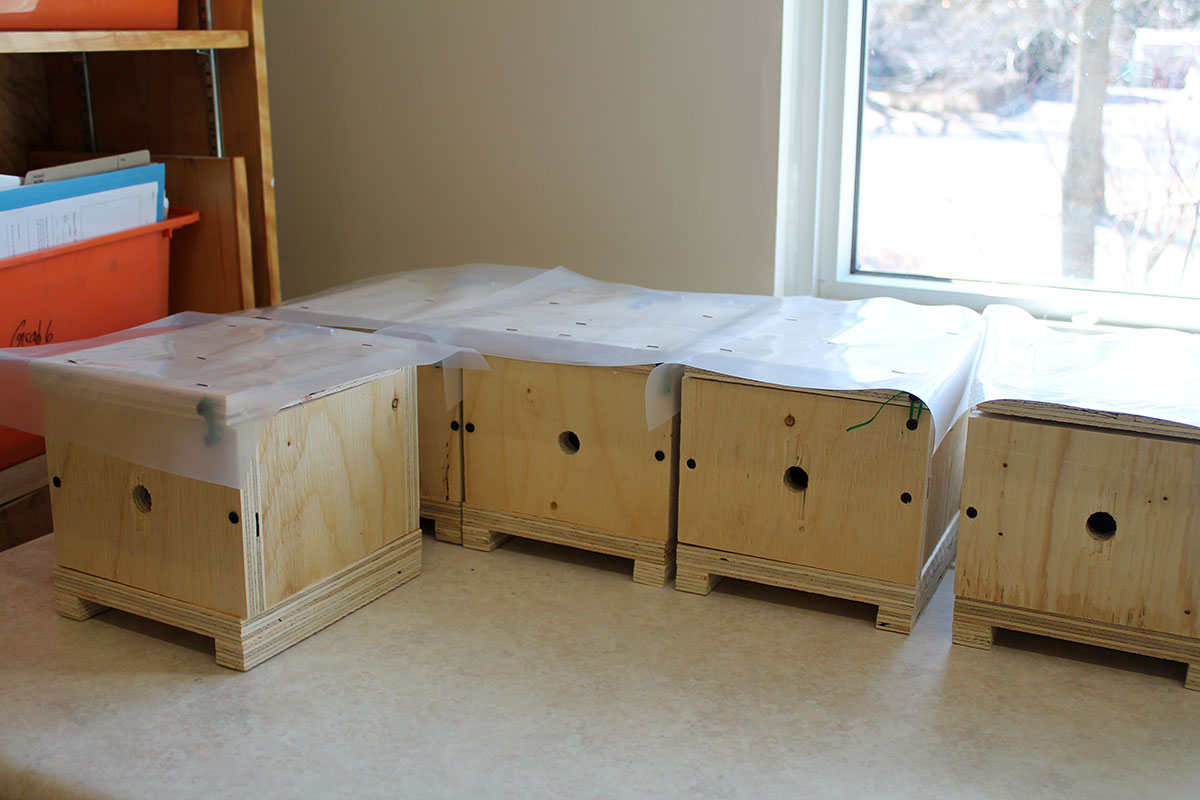Upper Grand students building bee boxes to assist University of Guelph research
March 26, 2018
GUELPH, Ontario – Mr. Caverly’s classroom at Waverley Drive Public School has been buzzing with activity as his grade 7 students participate in a project focused on wild bumble bees.
Students are building bumble bee nest boxes to assist the research of University of Guelph Masters student, Hayley Tompkins.

Tompkins is evaluating the effectiveness “of bumble bee nest boxes as a conservation and monitoring tool,” while monitoring colony development of wild bumble bees. She started her work in 2017 as a pilot project with Wildlife Preservation Canada and has since decided to continue the work as part of her Masters research at the U of G.
As part of her research, Tompkins builds and installs bee boxes at sites across Ontario. This year, she plans to install around 400 boxes, 278 of which are new builds.

After hearing about the project from a colleague in Orangeville, Mr. Caverly decided to get his students involved in the work. He also reached out to other colleagues in the Upper Grand District School Board to see if anyone else wanted to join in.
Within a day, he heard back from teachers at Rickson Ridge PS, Sir Isaac Brock PS and Elora PS, and along with the boxes his class would build, all 278 bee boxes were accounted for.
The students have been provided with step-by-step instructions, plus a finished box to model there work on. Each box requires assembling eight separate pieces. All of the pieces were cut and provided to the classes by Tompkins.
Mr. Caverly said the project ties nicely into the students’ Structures and Ecosystems units, and that it’s exciting to be part of the initiative.
The boxes will be installed at five sites, including two in the City of Guelph, and will be monitored throughout the spring, summer and early fall. The boxes themselves are installed underground and on trees at sites before the bee queens emerge from hibernation.
Participating schools will receive updates from Tompkins throughout the field season.
Categories: News



